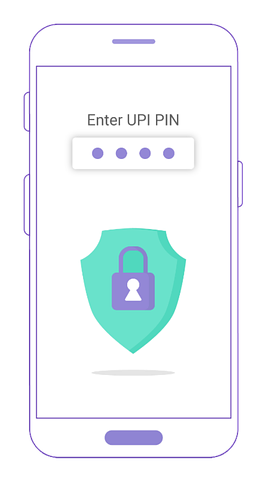The world is fast paced with multi-hued technological developments, one among the achievements is the Unified Payments Interface (UPI), the integrated online payment system. This framework has been popularly accepted in many developing and developed countries across the globe.

The digital payment system is encrypted with a special UPI PIN.
Unified Payments Interface (UPI)
The digital payment setup is exclusively designed for inter-bank transactions in India. To ascertain the safety and controlled circulation of funds over the network, every bank has set a UPI transaction limit per day.
To set the ratio clear, the Reserve Bank of India (the regulatory body of banks in India) has collaborated with the National Payments Corporation of India) to create a free passage for the transfer of funds across the stationed banks. To equalize the effect, the UPI came into effect, which permitted similar monetary transactions with a modernistic tinge. Using your mobile phone (through the registered mobile number with the bank), you can receive or transfer money from one bank to the other uninterruptedly.
The process of making digital transactions is simple and transparent. You only need a unique virtual address called UPI ID for making the payment, or else your registered mobile number and UPI PIN, the password for privacy and security.
Using a single alphanumeric ID, you can pursue uncountable money transfers, the digitised way. You can also request funds from the sender, shop online from e-commerce websites, pay to local vendors or confectionaries, and make bill payments for electricity, Wi-Fi, water etc. However, there is a catch, as mentioned in the earlier paragraph, you can only make limited payments as per the UPI transaction limit per day fixed by the banks.
Disruptions in the United Payments Interface
According to the yearly statistics of the National Payments Corporation of India (NPCI), as of January 2022, around 297 banks in India have displayed a live status on UPI transactions. While the estimated value and volume of UPI transitions stood 8,31,993.11 crores and 4,617.15 respectively.
It is imperative to decipher and decode the actual stats of UPI payments in India, and classify its weightage in the Indian economy. This will help us to avoid the loopholes in the widely used digital network of making payments.
Even though the digital mode of payment is fast, effective and undeferred, disruptions have been a temporary part and parcel of this process. Bottleneck is a term that is quite significant in terms of the delay induced in this online payment system.
However, these bottlenecks can be prevented by checking on the UPI transaction limit per day.
Ways to Avoid Bottleneck in Digital Transactions of Financial Nature
The United Payments Interface (UPI) enabled payment system is backed by designated banks across the country. Despite the endorsement from the financial institutions, there is a probability of discrepancies or delays in the digital payment process.
Listed below are suggested ways which will help to avoid getting bottlenecked by the UPI transaction limit per day.
1. Avoid making payments at odd hours of the day
It is quite self-explanatory, that one must avoid making digital transactions at midnight, as the system might not be active on these stipulated hours. Moreover, it is suggested to make online payments or settle bills during the working hours of banks for better facilitation.
2. Ensure to get the proper scan of the QR code
The United Payments Interface promotes the use of QR code scan for an easier flow of QR code payment as per the UPI transaction limit per day. It often happens in a haste, that we scan the code wrongly which either delays the completion of payment or even worse transfers it to another account. Thus you need to stay vigilant during the scanning procedure, or simply you can ask for the receiver’s UPI ID.
3. Get your facts right!
In case you are new to the UPI setup, it is advised to start from the bottom-most layer in context to the online payments. Initially, commence by making transactions with small amounts and understanding the features provided by the bank. This will help you work in alignment with the facilities offered by your bank and follow the UPI transaction limit per day.
4. Use third-party apps endorsed by your banks
The UPI payment system is supported by many banks in India. To simplify the process, banks have generated third-party applications suitable for mobile phone users. This will allow you to make online transactions with just a few clicks. Moreover, you can also set an automated bill payments system that will schedule debit payments on the premeditated without your involvement to avoid delays.
You can terminate this automated setup as per your will and requirement, anytime and anywhere.
Click here to know more: https://blog.cashfree.com/upi-transaction-limit/
The Final Verdict
This article covered the critical aspects of Unified Payments Interface in the Indian socio-economic landscape, along with the irregular delays in the process. However, UPI being an RBI regulated system of online payments is highly secured and backed with a unique user ID, accessible only to the respective users.
If you are already a user of this interface or want to join the community, contact your nearest bank branch, study more about the UPI transaction limit per day and set up the profile effortlessly.

